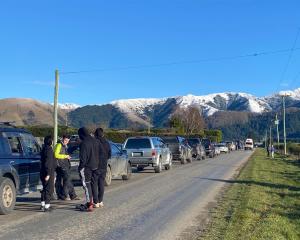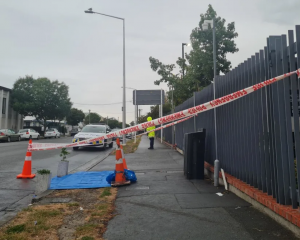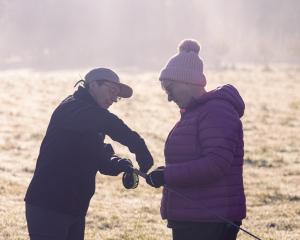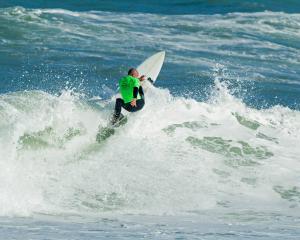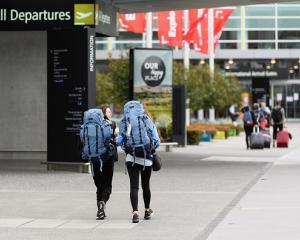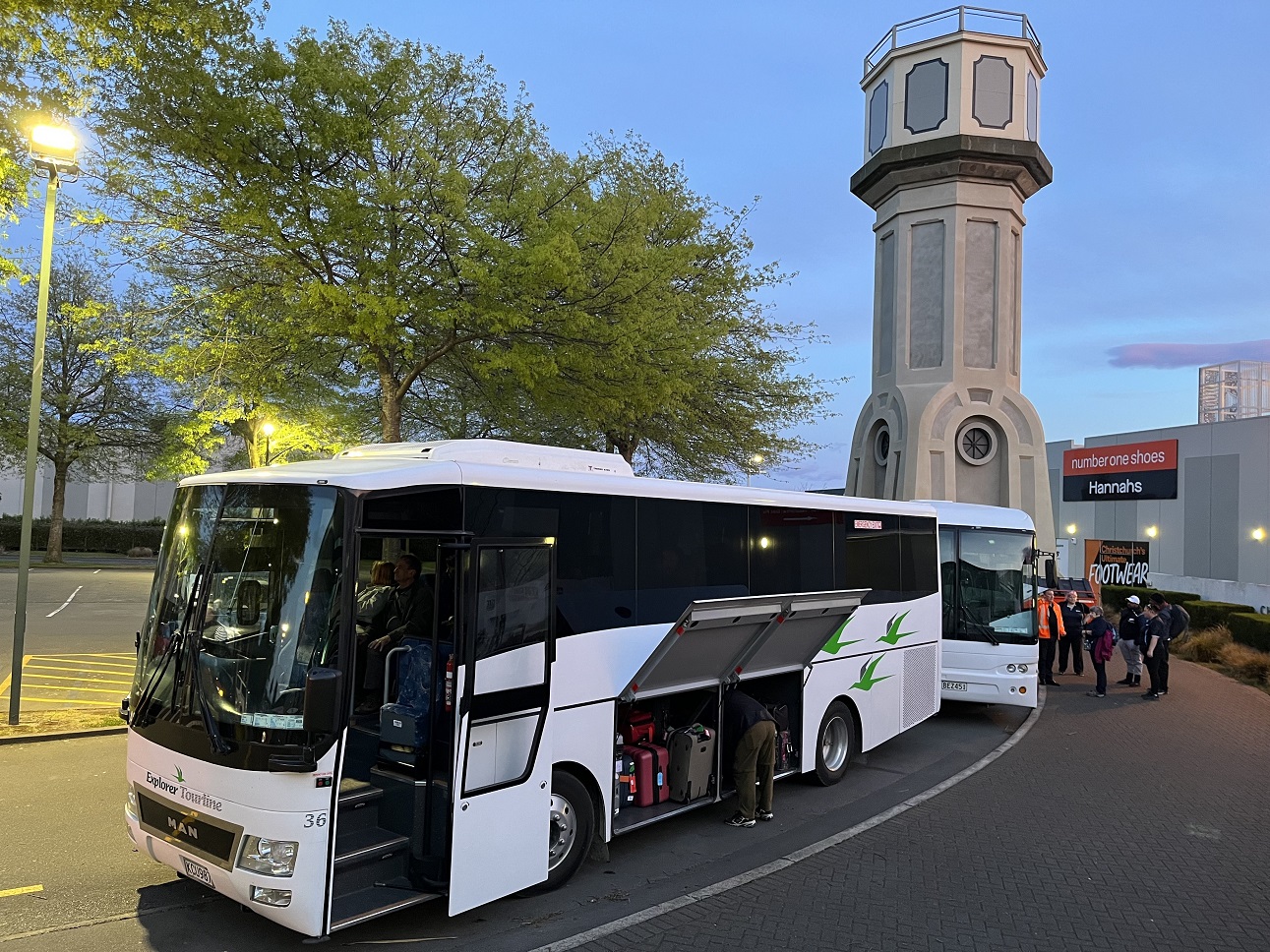
A painful and stubborn ear infection had put paid to flying for the time being. But work necessitated a couple of days in Wellington. Living in a one-car family had me scratching my head about how else it was possible to get from Christchurch to our lovely capital city.
One of those big comfy coaches maybe, with Wi-Fi if you are fortunate enough to strike the right one? Yeah nah, done enough of that over the years between Ōtautahi and Ōtepoti.
And ... what’s left, other than biking or walking? Well, train and the inter-island ferry. But was rail even an option? Was the Coastal Pacific train operating in mid-October? Turns out, yes it was, though the once-a-day service was only working a four-day long weekend timetable.
I was lucky. I love trains, the fact you can get up and walk about, buy something to eat, and not have to hang on grimly in a bus to use the toilet because you’ve had one coffee or tea too many in the previous hours.
It’s also part of being British. Trains, overground, underground, are in the blood, and the best and easiest way to get around the congestion — if the drivers aren’t on strike. The lack of trains in Aotearoa is perhaps the thing I miss most about the UK.
Sometimes it is good not to fly, even without an ear infection. Travelling by plane is like being in la-la land. The beauties of our country might just be a film set.
Flying distorts the country, making you think it is smaller than it really is. That Auckland is only an hour from Christchurch and that Wellington is about the same distance from Dunedin.
Besides, I’ve always found it irritating when people in the North Island babble on social media somewhat sanctimoniously about "not flying today, getting the train to save the environment".
At least North Islanders have trains they can use. In the entire South Island there are maybe two train services a day, sometimes not even that out of the summer season.
Such thoughts were going round in my head as I paid $177 for the Sunday Coastal Pacific from Christchurch to Picton, and another $76 to be a walk-on passenger on the Interislander ferry across Cook Strait.
It seemed a trifle steep to hand over $253 for a one-way trip to Wellington that was going to take the best part of a day. But let’s face it, some one-way Air New Zealand fares have been even higher than that in recent months.
For the first time in ages I was really excited about travelling. All election day, as the nor’west gales blasted away and the planes had trouble landing, I was happy and a touch smug I would be keeping my feet on the ground.
The only hurdle was setting the alarm for a pre-dawn time that surely doesn’t actually exist? It’s hard to go to bed early on election night, but the check-in at Addington Station opening at 6am was a good incentive to call it a day.
And then ... at 9.43pm, the phone pings, announcing an email from the Great Journeys New Zealand team which put an end to such anticipation.
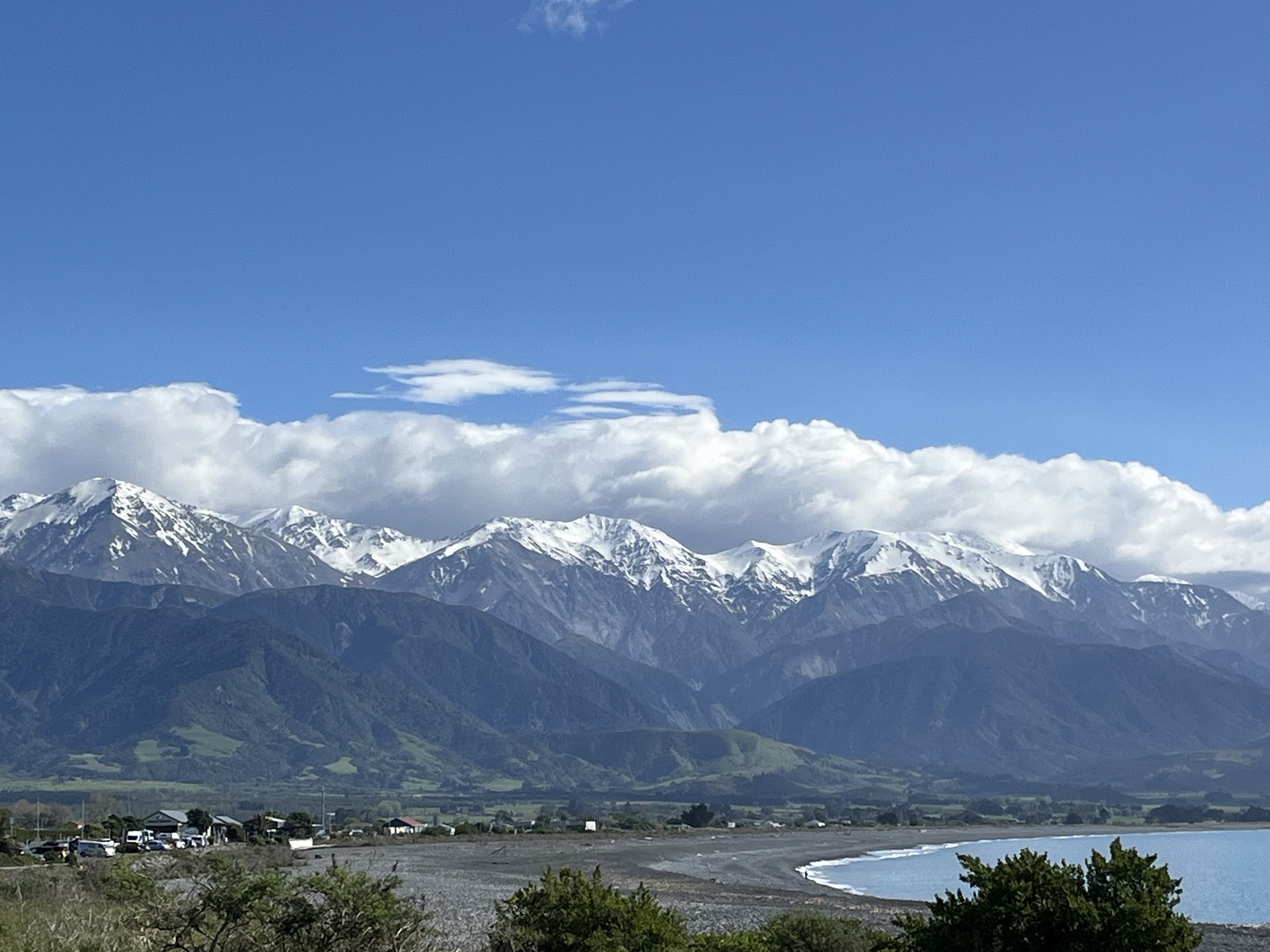
"We regret" — (uh-oh) — "to inform you that the Coastal Pacific train service between Christchurch and Picton for tomorrow will be replaced by bus."
Bus? BUS?! You’re kidding me?
"Unfortunately, this is due to the extremely high winds experienced ... having caused trees and power lines to fall across rail lines."
The email came with a sincere apology and a recognition that "bus replacements, especially at short notice, are disruptive to our passengers’ travel plans".
The now Not-so-Great Journeys was offering either a 50% refund for those who took the bus, a free postponement of the train trip, or a full refund for those who did not want to go by bus.
(To be fair, the 50% refund was in the bank the following day).
It was a disappointing note to finish the day on, in a First World kind of way.
The big day dawned and I left home at 6.10am. Two medium-sized buses were waiting outside the railway station at Addington. Check-in was easy and the staff were very apologetic.
In the half-light, the drivers were quietly asking KiwiRail staff about stops en-route and hoping it would not be too windy.
Not very encouragingly, they also asked if the ferry would be held if they were running late. The Coastal Pacific is meant to arrive at Picton at 12.40pm and connect with the 2.15pm sailing. The drivers were told yes, if necessary.
The seats were OK but passengers were complaining generally about the lack of legroom, and there was no seat pocket for books or drink bottles. Luckily, I had a spare seat next to me for my notebook and bits and pieces.
"It’s not what we planned," someone said behind me. I said the scenery would still be great and tried to be optimistic.
Mortifyingly, we all watched as a train pulled into the station. The TranzAlpine service to Greymouth was obviously still running, so it was weirdly reassuring to know the South Island at least had one train operating on a Sunday.
The first, full, bus left at 6.51am and ours, about two-thirds full, departed 10 minutes later.

The bus was going to stop at all the stations where pick-ups and drop-offs had been scheduled, with a 20-minute coffee break at Kaikōura and arrival into Picton at the same time the train would have arrived.
The nor’wester was already gusting strongly as the bus headed for Rangiora, and blown down gum trees were lying untidily in paddocks. Just south of Waipara, about eight mature pine trees were uprooted almost perpendicular across a couple of hundred metres of the rail line, their loss to New Zealand’s carbon bank adding to my emissions for the trip.
At 9.11am we reached the bridge over the Conway River, the point where the railway and State Highway 1 split and go in different directions, the former out to the coast at Claverley and the latter winding through the Hundalee hills to re-meet the rail line at Oaro.
The Hundalees are well-known for their sinuous, undulating, seemingly endless curves. I saw the white fence where my brother once threw-up. Someone down the back of the bus was having the same problem several decades later.
Then lo! The sunlight sparkling off the sea as we came out at Oaro and twisted along the amazingly post-2016 earthquake re-engineered road, through tunnels, past rocky bluffs where Marlborough rock daisies cling crazily, under slip nets and into Kaikōura station at 9.47am.
It was a warm, still, Sunday morning, With a coffee and bacon sandwich — there go my emissions again — in hand, I had a quick slide/walk down thick pebbles on the beach, gawping at the stupendous Manakau, at 2608m the highest peak of the snow-covered Seaward Kaikōura Range.
Very strong winds soon began buffeting the bus on the road north from Kaikōura. Our driver did a great job wrestling the bus against the crosswinds rolling off the mountains and down the river beds. Dust was whirling crazily high up on the ranges and just out to sea there was a line of white and spray where the gusts were landing.
As we crabbed closer to the edges of Cook Strait, the blustering gale got worse, all the way through Clarence, Kekerengu, past the cute St Oswald’s limestone church and then heading up and inland to Ward and Seddon. On a clear day you can see the Wellington hills from here, but visibility was seriously reduced by salt haze out to sea.
After a brief drop-off at Blenheim station, we rejoined the traffic for the last leg to Picton. Rainclouds were gathering now. The wind was as strong as ever and now the road was slippery too. But impressively we made it to our destination at 12.46pm, just six minutes later than the scheduled arrival time if we’d been on the train.
Rain was now hammering on the roof of the Interislander terminal. The lady with the pink peonies — "Guess how much? $7 a bunch!" — was nervous about a rough ferry crossing.
"Northwesterly gales are never that bad in Cook Strait," I heard myself saying in a pompous, know-it-all fashion, even though I was beginning to wonder too. I pointed out the "sea conditions" chart on the wall which said "light".
A fleet of smaller buses delivered us to the puddle-filled, slippery, oily-smelling vehicle deck of the Kaitaki and at 2.09pm we were away as the captain had predicted, six minutes earlier than scheduled.
I’d forked out another $48 to try the newish Pelorus Jack Lounge. I felt like I needed a bit of a quiet retreat after the bus journey.
Tucked away at the for’ard port side, I had my own comfy chair, and then my own table, as I drank my way through several cups of tea and coffee, nibbled on crackers and cheese, and then thought "what the hell", and scoffed lamb shanks and butter chicken (sorry emissions).
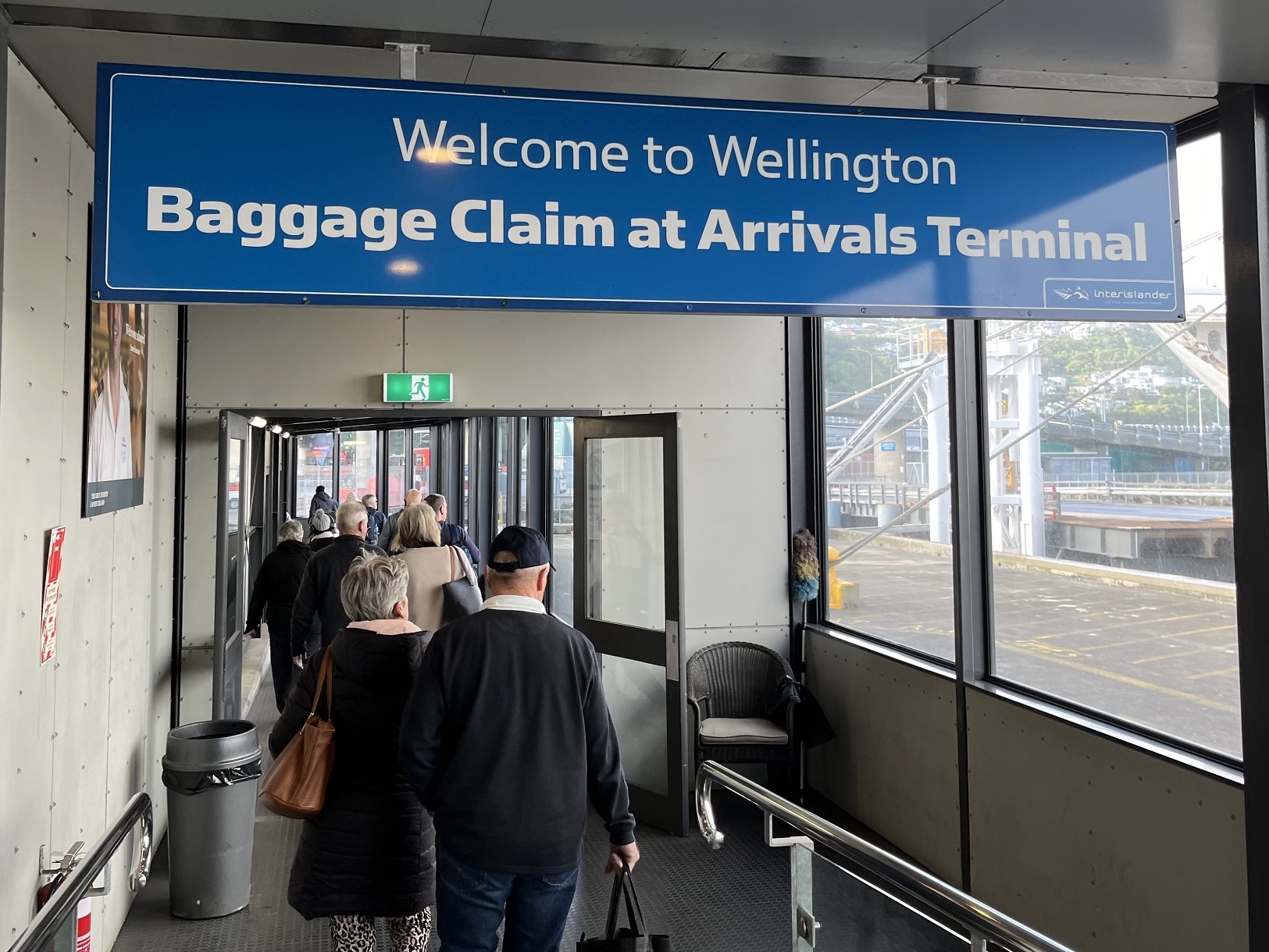
The wind increased further towards the Wellington coast and big gusts were punching the ferry, causing something to clank against the side. The sea looked wild and angry, streaks of white obliterating the crests of the waves. The capital’s hills loomed out of the haze at times, just a few kilometres away.
It seemed weird to think I was still technically on State Highway 1.
Planes were on final approach to Wellington Airport overhead — again, I felt relieved I wasn’t up there — as the ship turned north and through the harbour entrance, past Barrett Reef and Steeple Rock, big blasts of wind scalloping out the water below.
Shortly before docking, and by now perhaps in a state of mild delirium, I alarmed a fellow sea salt by accidentally laughing out loud at the announcement that "passengers with dogs in kennels can prepare to disembark". Guess you had to be there.
We docked 17 minutes early at 5.28pm. They were vacuuming the lounges already. Shattered now, my bag was third off the belt fortunately and I was in an Uber and arrived at the hotel at 5.56pm.
My fuddled brain made that 10 hours and 27 minutes from the bus leaving Addington to the ferry berthing in Wellington.
Door to door, it was an impressive 11 hours and 46 minutes.
If I’d flown, leaving home to arrive at the airport with the requisite half an hour to spare before a 35-minute flight, it might have taken maybe 1 hour and 45 minutes door-to-door.
Originally I had wanted to calculate my travel emissions to Wellington, to see if the train and ferry journey emitted fewer greenhouse gases than a flight.
I was, and remain, a little sceptical that I was doing the world much of a favour by not flying and taking on such a long trip instead.
I tried the Toitū Envirocare website, but it told me it had retired its public emissions calculators: "We believe the key to acting on climate change is avoidance of emissions first, then reduce, and only after that looking for ways to mitigate and compensate."
I guess that means not travelling at all?
So, the answer to the question can you get to the North Island from the South Island without driving yourself or flying is a kind of "yes" — as long as you aren’t in a hurry and aren’t planning on travelling back the same way within a few days.
As for New Zealand’s wretched train service, when is someone finally going to have the courage to plan for 10 or 20 years’ hence and a nationwide rail network that will really help us bring down our emissions?
- Adding insult to injury, on a flying visit to Blenheim last weekend we were held up twice at railway crossings by the Coastal Pacific, trundling past and looking just fine and dandy.








